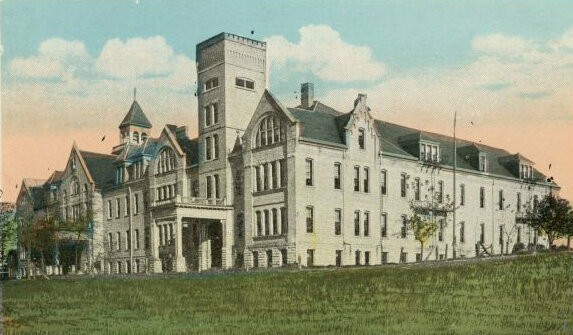
By Kris Leonhardt
Editor-in-chief
ALLOUEZ – The first orphanage in America was established in the 1700s to care for deserted children as the incoming Europeans and other emigrants faced conflict while trying to settle land already inhabited.
Orphanages grew in the early 1800s as charitable groups looked to care for children orphaned as a result of health epidemics, conflict and struggling to make it in a new world.
The financial struggles of the Depression era exacerbated the issue, setting it on a trajectory to reach an all-time high.
“In the 30 years following the end of World War II, both the number of orphanages in America and the number of children in them declined dramatically. Nationally, the number of children in institutional care fell from a high of approximately 144,000 in the mid-1930s to 95,000 in 1951 and 63,000 in 1970,” Marshall B. Jones wrote in the “Crisis of the American Orphanage, 1931-40” for Pennsylvania State University.
The rise and fall of the country’s orphanages is mirrored in the lifespan of Green Bay’s St. Joseph’s Orphan Asylum — later known as St. Joseph’s Home.
The Catholic facility was opened as an orphanage on June 29, 1877, under the direction of Bishop Joseph Melcher, Sister Melania and Father Norbert Kersten at the corner of Webster Street and Crooks Street in Green Bay with six children and assistance from the Notre Dame Sisters of Milwaukee.
In a little over a year, the orphanage had 34 children residing there.
A report to the State Board of Charities and Reforms for the year 1881 showed 75 children in the facility — 27 taken in, 24 discharged, one death and two runaways — all but two from northeastern Wisconsin.
An 1887 report showed 100 orphans and six boarders — 58 boys and 48 girls — with 14 in the nursery.
In 1889, plans for a boys home were announced.
An existing farm was later purchased on Riverside Drive just north of St. Joseph’s Street and a large historic Italianate structure was built in 1896.
The large imposing structure drew the attention of those passing by the facility.
“A new gate has been put up along the street car track at St. Joseph’s Orphan Asylum. Over it is placed the words, ‘St. Joseph’s Orphan Asylum.’ This is done so that strangers going to De Pere can tell what the institution is,” an August 1900 Green Bay Semi-Weekly Gazette article stated.
And the orphan population was starting to outgrow its capacity.
“The St. Joseph Orphan Asylum, it is expected will in the course of the next few days have 200 inmates,” a March 10, 1900 Green Bay Semi-Weekly Gazette article read. “There are today 193 children in the institution, six having been received the last of this week or the first of next.
“Accommodations at the St. Joseph’s Asylum are now being taxed to their utmost.”
In 1902, a south wing was added but the orphan population continued to grow, getting as high as 300, with a staff of 50 priests and nuns before starting to decline.
Read the conclusion in next week’s edition